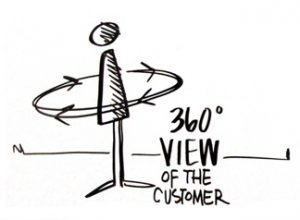 Not long ago, one of my colleagues wrote a blog post entitled, How to wake up dormant customers, which discusses the challenges in being customer centric – where you want to treat all customers well, and your best customers better. It made me think about the key tenet of Six Sigma – the Voice of the Customer (VOC). Basically, every decision you make in your organization should revolves around the customer (this is a wonderful way of looking at things because it objectifies why you need to make changes in your organization, processes, products, services, etc.). VOC is inclusive of internal and external customers.
Not long ago, one of my colleagues wrote a blog post entitled, How to wake up dormant customers, which discusses the challenges in being customer centric – where you want to treat all customers well, and your best customers better. It made me think about the key tenet of Six Sigma – the Voice of the Customer (VOC). Basically, every decision you make in your organization should revolves around the customer (this is a wonderful way of looking at things because it objectifies why you need to make changes in your organization, processes, products, services, etc.). VOC is inclusive of internal and external customers.
One of the problems we have as workers is that we are often so abstracted from the end-customer. I spent a number of years working in extremely large insurance companies, and the roles that I had did not require any interaction with someone that would buy insurance from my company. In fact, most of the time it wouldn’t have mattered if we were selling widgets versus insurance policies – I was that far away from our end-customer. Coming to SAS and working in the field gave me an entirely different perspective: Everything I do is customer-facing, and you see the direct impact of your actions on the customer relationship. This is awesome, by the way, because the feedback (good and bad) is instantaneous. It’s critically important to bring that customer feedback, intelligence and needs back to continually educate the rest of the organization on what’s important to the customer, and use that information to shape our products, services and solutions.
If you find yourself in that abstracted layer, how can you become more customer-centric? As I mentioned earlier, there are internal and external customers, and it’s important to be mindful of both, regardless of where you are in your company.
On a recent customer analytic process improvement initiative I worked on, the analytic team’s customer was the marketing department. Before the team began any additional work on their process, I told them to interview or survey their marketing customers to ensure that their improvement project aligned with their internal customer’s needs. Is the marketing department’s number one goal flexibility or speed or quality? What are the tradeoffs in achieving each of those goals? Would the answer to those questions change how you “optimize” your process? Becoming customer-centric is the key is to ensure that you’re solving the right problem for the right reason.
The first step is to identify all of your upstream customers – in this example, the marketing team, their external business customers, and the end-consumers those companies want to attract – and find out what’s important to them. If possible, spend time with the teams that directly interact with the end-consumers (some of the most enlightening insight I gained at my insurance company was some time I spent listening in on the customer phone lines).
We’ll do a much better job of waking our dormant internal and external customers if we have a good understanding of what their needs are and taking a more customer-centric approach to everything we do.
